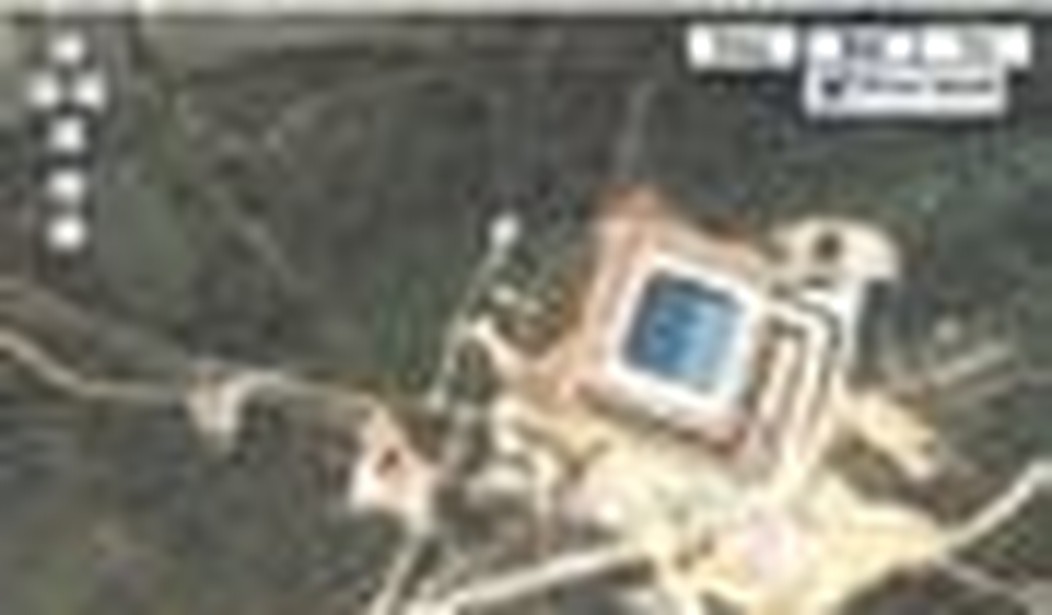You can add another rogue state to the North Korean-Iranian-Syrian nuclear Axis of Evil: Burma. Cables released by WikiLeaks support the claims of Burmese defectors and opposition groups that the military junta is working hard to become a nuclear weapons state.
According to a November 2004 document, a senior Indian diplomat said that top Burmese officials had “wondered whether they would have to ‘go nuclear’ to get U.S. attention.” Other documents state that informants are reporting the movement of suspicious cargo. In 2009, a source in the government told the Australian ambassador that Burma cooperates with Russia for “software” training and North Korea for “hardware.”
One August 2004 cable, from the U.S. embassy in Rangoon, reports that a Burmese officer in an engineering unit mentioned an underground site about 300 miles northwest of the capitol, measuring about 500 feet from the bottom of its cave to the top of the hill above. He claims that about 300 North Korean technicians work at the site. The cable’s author doubts the truth of this number, and there are other reasons to doubt the officer’s testimony. He claims the North Koreans cannot leave the site and outsiders like him cannot enter — raising the question of how he saw the personnel.
But there is near-smoking gun evidence to substantiate reports of a Burmese nuke project. A major in the army, Sai Thein Win, has defected to the Democratic Voice of Burma, delivering into its hands hundreds of secret documents and photos. The materials reveal the construction of a huge network of underground facilities dating back to 1996 and costing at least $3.5 billion since 2001. This evidence is enough to convince Robert Kelley, a former director of the International Atomic Energy Agency, that Burma’s junta is working on uranium enrichment and plutonium reprocessing capabilities with North Korean assistance.
The Strategic and Defence Studies Centre of Australia has published a study reaching the same conclusion. The authors interviewed two defectors who independently confirmed the building of a secret nuclear site, nearby the public site constructed with Russian aid. One defector testified to the presence of about 60 North Koreans at a secret site, which the authors describe as similar in design to the Syrian nuclear reactor destroyed by Israel in 2007.
The materials obtained by the Democratic Voice of Burma also show that a series of meetings took place in North Korea from the 22nd to the 29th of November in 2008 — meetings that included the Burmese military chief. One cable released by Wikileaks notes that a Burmese official mentioned the chief’s 2008 visit to North Korea in a slip of the tongue.
The organization has put together all the intelligence it has on Burma’s secret nuclear weapons program in the form of a documentary available to the public. For now, the junta is able only to mine uranium and produce yellowcake. One defector says that the regime hopes to be nuclear-capable by 2020. But the authors of the Australian study say Burma could go nuclear by 2014 in the absence of major problems. Rudimentary though it may be, the West should not dismiss Burma’s role in the nuclear Axis of Evil. The junta is in a position to fill one of the gaps in Iran’s nuclear effort. According to one defector, in February 2004 he met with an Iranian intelligence officer and nuclear scientist and received a sample of yellowcake. If this testimony is true, then Iran has already turned to Burma to help relieve its critical shortage of raw uranium.
Moreover, the UN has already confirmed that North Korea is shipping nuclear materials to Burma and using “links with overseas criminal networks to carry out these activities.” Next, corrupt Burmese officials might sell nuclear materials to criminals or terrorists. A September 2008 cable describes a Burmese civilian’s threat to U.S. diplomats to sell uranium-238 to Thailand, China, or other countries if the Americans themselves declined to buy. Claiming he already had 50 kg of Burmese uranium in a barrel, the civilian boasted that he could sell up to 2,000 kg. Another cable from January 2007 describes a suspected shipment of 112 metric tons of uranium ore to China by the Burmese government.
The West has no shortage of reasons to act against Burma’s nuclear program. Aside from the obvious danger of a nuclear-armed junta, the program could set off a regional arms race. Plus, Burma’s nuclear program can help other rogue states’ efforts. North Korea profits from its work for the junta. And corrupt Burmese officials can always sell off the nuclear technology they’ve acquired.
Burma has yet to sign the Nuclear Non-Proliferation Treaty’s “Additional Protocol” allowing more intrusive inspections. Former IAEA director Robert Kelley says that this activity exempts Burma from the IAEA’s Small Quantities Protocol, which permits countries with minimal nuclear material and no nuclear facilities to work without inspections. Shockingly, Kelley says the IAEA — as allowed under the Protocol — is actually training Burmese nuclear technicians.
Tackling Burmese proliferation is no small task. As a start, the U.S. and its allies should make the case that Burma does not qualify for the Small Quantities Protocol and begin applying pressure to force the junta to sign the Additional Protocol. If the junta’s members want U.S. attention, we should give it to them — and make them regret asking for it.









Join the conversation as a VIP Member